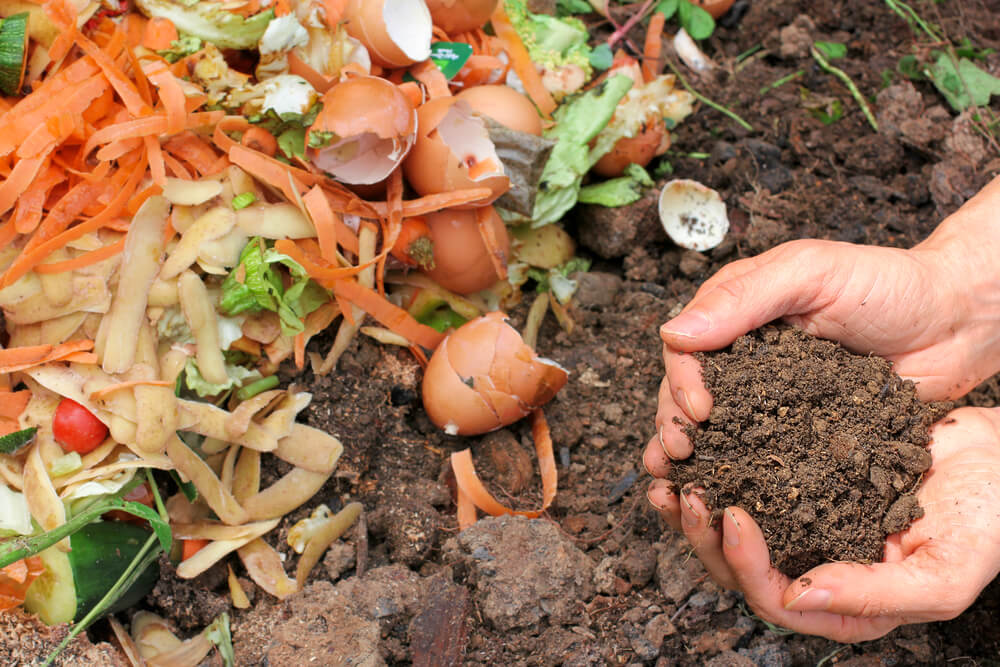The Dirt on Compost

THE DIRT ON COMPOST
“Remember, man, that you are dust and unto dust you shall return.” These words accompany the ritual of the bestowal of ashes on the foreheads of Christian faithful every Ash Wednesday. This day of reflection upon our mortality takes place in February, during the very dead of winter…at least it’s the dead of winter in the Northern Hemisphere. And it’s the deadest of the dead of winter here in Winnipeg!
But all through the dead of winter, every day or so, I cart out to my backyard composter the peels from oranges and potatoes, the stems from trimmed spinach, the shells of breakfast eggs and the grounds of breakfast coffee. By late March I have a black box filled high with the frozen detritus of many meals.
And what for most people is trashed and buried and ends up producing more greenhouse gases, for me ends up promoting a new spurt of life and growth in my vegetable garden.
And there is something enormously satisfying, something truly spiritual, about taking what is usually discarded and despised and making it into a sustainer of new life. I suppose it’s kind of like what a good healer or teacher does: the stone other builders rejected becomes the corner stone.
Backyard composting is as easy as it gets. You need a container with a cover. I got mine years ago for free from the City of Winnipeg. You need a garden spade and a wheel barrow if possible. You need those leaves you raked in the fall and stowed over winter to make up the “dry” ingredient. Or you can use dried grass clippings.
Of course, you can also use most garden waste (not tomatoes since the seeds will sprout in the composter) as dry ingredient; however, items that are tough like corn plant stems, thick twigs and the like take too long to compost.
You need your kitchen scraps…anything that comes from plants (again, not tomatoes), nothing that comes from animals (egg shells excepted) to make up the “wet” ingredient. You need a plastic bag or other container on your kitchen counter into which daily you place the kitchen scraps.
Ideally, the scraps are in small pieces. So, for example, if you have a quarter cantaloupe rind or a broccoli stem, chop it into few pieces before you put it in. There are a few veggie leavings that don’t compost well: the leafy tops of pineapples, the skins of avocado, corn cobs….they just take too long to transform into compost…although if you’re really devoted you can chop them into small pieces and they work fine.
Every day or two, cart your container out and throw its contents into the composter. And leave it there.
Come the thaw, you need to get to work a bit. Take your spade, your wheel barrow and some of your stored leaves. Go to the bin and shovel your now melted muck into the wheel barrow. Then, start shoveling it back into the bin.
Alternate layers of muck and layers of a dry ingredient (an inch or two of muck and three or four inches of dry material, topped by a sprinkling of garden soil.) Add a bit of water, enough to wet the dry ingredient like a wrung-out sponge. And leave it.
And continue to add every couple of days your kitchen container bag of kitchen scraps. If the cooking compost seems dry, add water until it’s moist like a lightly wrung sponge.
Every two weeks or so, shovel the whole mess back into the wheel barrow and repeat the layering. This process is critical since you are regularly exposing the mess to oxygen, thereby promoting aerobic decomposition rather than anaerobic decomposition.
The product of anaerobic decomposition is smelly, noxious and sometimes deadly (think botulism). The product of aerobic decomposition is black gold for plants. And don’t worry if you find insects and worms in the cooking compost: in fact, their presence is a sign that everything’s working well.
Come fall, you will have a fine, powdery soil-like product. What I do is then store this in a second compost bin for over-wintering. Doing this leaves me with an empty primary bin which I fill up again over the winter with scraps.
Come spring, I take the powdery product and spade it into my vegetable garden. And if I have new perennials, bushes or trees to plant in the yard, once I’ve dug the hole I spade shovelsful of it in: my new plants will grow like gangbusters.
And if you have still more, spread it on your lawn to stimulate growth. Or place some of it like mulch over established plants, such as vines or rosebushes, in order to promote lush growth and abundant flowering.
Other than mere laziness, the main reason people don’t compost is they fear the compost bin will smell or it will attract rodents. This will not happen….provided that you do the regular turning and oxygenization of the cooking compost pile…and, of course, keep the composter covered.
A side benefit of composting is that you significantly reduce the amount of trash you add to landfills. And in a landfill, the vegetable matter underground is deprived of oxygen and so its decomposition produces methane, a greenhouse gas.
In Shakespeare’s Hamlet, the Prince tells his friend, Horatio, that ultimately all of us become food for worms. The same is true for most people’s kitchen scraps. But how much more satisfying it is to make them into food for tomatoes and roses!




No Comments